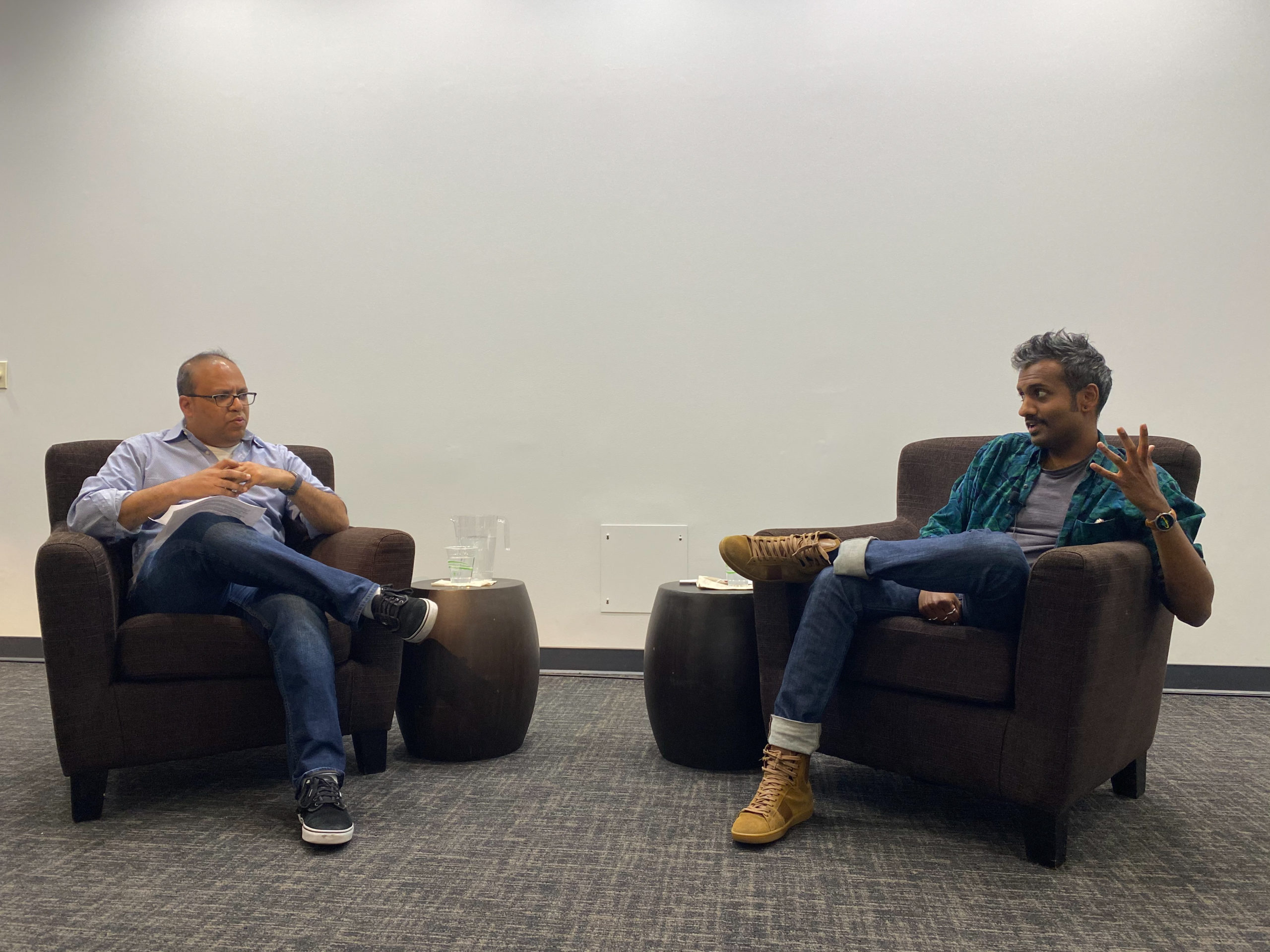“Today, Explained” host Sean Rameswaram is working to give his listeners the day’s news — along with a side of hope.
The podcast, Vox Media’s daily audio news show, pitches itself as “your all killer, no filler, Monday to Friday news.”
In a Tuesday talk at Cypress Auditorium, Rameswaram told audiences that the show is betting on a playful tone and diverse perspectives to stand out in a saturated market.
“We try to make a deeply human news show,” Rameswaram said. “In a sense, if ‘Today, Explained’ is about something, it is about what it is to be a human experiencing the news in 2018, 2019, 2020. I think what that experience is, it is shocking, revolting and sometimes it is really funny and stupid. We just try to lean into all of the emotions you would feel.”
In addition to his work for Vox, Rameswaram has hosted Radiolab’s “More Perfect” podcast and worked for CBC, NPR and WNYC. His experience producing content for these stations eventually led him to work for “Today, Explained.”
“One day, someone at Vox called me up and said ‘Hey, would you consider hosting our daily news podcast?’” Rameswaram said. “And it wasn’t the first time someone at Vox had called me up and asked me to do something, but it was the first time the thing scared the wits out of me.”
Entering the podcast market in competition with well-established players like The New York Times’ “The Daily” was intimidating, Rameswaram said, but he realized that he had the chance to make Vox’s offering something different.
Because Rameswaram joined the podcast at its inception, he had a unique opportunity to design the podcast’s structure. He said he wanted to create a podcast that gave its listeners hope.
“We stay true to the bet we made before the show even launched, which is to make a show that more fully represents the gamut of human emotion,” Rameswaram said. “I don’t want to act like the world is ending every day on the show because, while the world is surely slowly ending, we don’t go through our lives every day thinking, ‘Man, everything sucks.’”
Rameswaram and his team ultimately settled on a show with a playful tone that aimed to take full advantage of the audio format, ranging from snippets of conversations from passengers of a cruise ship quarantined for coronavirus to laugh tracks in an episode about Vice President Mike Pence’s proposed Space Force.
In line with this goal, Rameswaram emphasized the importance of integrating diverse voices and perspectives into his episodes, framing it as a way to expose listeners to viewpoints that might differ from their own.
“It is to the point where people don’t even want to hear [disagreeing viewpoints], and that feels dangerous to me,” Rameswaram said. “So, we try as often as possible when we’re talking about people on the show to include their voices,” Rameswaram said.
When asked by Brown Institute Director, professor Maneesh Agrawala, for advice on how to enter podcasting, Rameswaram responded with a call to action.
“What I would say to anyone who is interested in getting into audio is get into audio,” Rameswaram said. “Start doing it, and then you have something to talk about when you meet someone at a podcast event.”
Contact Anastasia Malenko at malenk0 ‘at’ stanford.edu.
